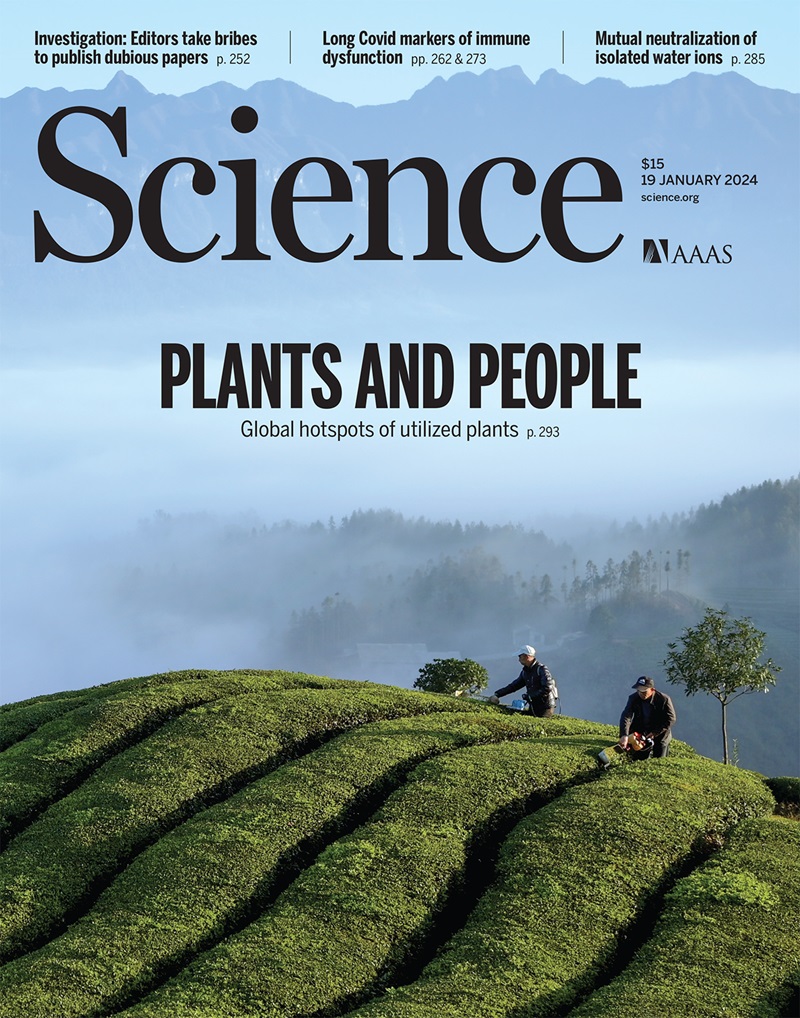Perfect Coulomb drag and exciton transport in an excitonic insulator
IF 45.8
1区 综合性期刊
Q1 MULTIDISCIPLINARY SCIENCES
引用次数: 0
Abstract
Strongly coupled electron-hole bilayers can host quantum states of interlayer excitons, such as high-temperature exciton condensates at zero magnetic field. This state is predicted to feature perfect Coulomb drag, where a current in one layer is accompanied by an equal but opposite current in the other. We used an optical technique to probe the electrical transport of correlated electron-hole bilayers based on MoSe2/hBN/WSe2 heterostructures. We observed perfect Coulomb drag in the excitonic insulator phase at low temperatures; the counterflow resistance of interlayer excitons remained finite. These results indicate the formation of an exciton gas that does not condense into a superfluid. Our work demonstrates that dynamic optical spectroscopy provides a powerful tool for probing exciton transport behavior in correlated electron-hole fluids.
激子绝缘体中完美的库仑阻力和激子输运
强耦合电子-空穴双层可以承载层间激子的量子态,如零磁场下的高温激子凝聚。这种状态预计具有完美的库仑阻力,其中一层中的电流伴随着另一层中相等但相反的电流。我们利用光学技术探测了基于MoSe 2 /hBN/WSe 2异质结构的相关电子-空穴双层的电输运。我们在低温下观察到激子绝缘体相的完美库仑阻力;层间激子的逆流阻力仍然是有限的。这些结果表明激子气体的形成不会凝结成超流体。我们的工作表明,动态光谱学为探测相关电子空穴流体中的激子输运行为提供了强有力的工具。
本文章由计算机程序翻译,如有差异,请以英文原文为准。
求助全文
约1分钟内获得全文
求助全文
来源期刊

Science
综合性期刊-综合性期刊
CiteScore
61.10
自引率
0.90%
发文量
0
审稿时长
2.1 months
期刊介绍:
Science is a leading outlet for scientific news, commentary, and cutting-edge research. Through its print and online incarnations, Science reaches an estimated worldwide readership of more than one million. Science’s authorship is global too, and its articles consistently rank among the world's most cited research.
Science serves as a forum for discussion of important issues related to the advancement of science by publishing material on which a consensus has been reached as well as including the presentation of minority or conflicting points of view. Accordingly, all articles published in Science—including editorials, news and comment, and book reviews—are signed and reflect the individual views of the authors and not official points of view adopted by AAAS or the institutions with which the authors are affiliated.
Science seeks to publish those papers that are most influential in their fields or across fields and that will significantly advance scientific understanding. Selected papers should present novel and broadly important data, syntheses, or concepts. They should merit recognition by the wider scientific community and general public provided by publication in Science, beyond that provided by specialty journals. Science welcomes submissions from all fields of science and from any source. The editors are committed to the prompt evaluation and publication of submitted papers while upholding high standards that support reproducibility of published research. Science is published weekly; selected papers are published online ahead of print.
 求助内容:
求助内容: 应助结果提醒方式:
应助结果提醒方式:


